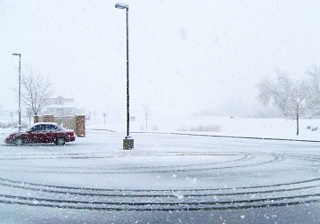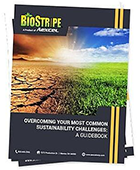Parking Lot Maintenance Checklist by Season
Asphalt parking lots are designed to last between 20 and 40 years, but a well-designed preventative parking lot maintenance program can extend your lot well beyond its life expectancy. Conversely, property owners that fail to perform proper maintenance may find themselves replacing their asphalt sooner than anticipated. To prolong your pavement’s life, it’s important to plan crack filling, sweeping, sealcoating, striping, proper snow management, ice and water drainage, and a laundry list of other tasks throughout the year. This checklist provides a seasonal game plan for preserving your asphalt parking lot.
Winter: Manage snow and ice while minimizing your environmental impact
- Use a liquid anti-icing agent before snow storms to prevent snow and ice from bonding to the pavement
- Proper use of anti-icing agents uses one-fourth of the material at one-tenth of the cost
- Remove snow from pavement as soon as possible to prevent compaction
- Plow before applying salt, sand, or deicers. These materials should be used to disrupt the bond between the asphalt and snow or ice.
- Minimize your use of salt. Every tablespoon of salt permanently pollutes five gallons of water. Try sourcing non-chloride products instead of salt to avoid salt’s long-term environmental effects. With this in mind, store snow downhill from any salt storage areas to minimize water pollution
- Salt is only effective above 15 degrees Fahrenheit. For lower temperatures, use a different deicer.
- Use handheld sprayers and shakers to apply deicers instead of applying it on your parking lot by hand. This will help prevent you from overusing materials and control the cost of your winter parking lot maintenance.
Spring: Fix the damage winter left behind
- Remove weeds and other unwanted vegetation as they grow in
- Sweep parking lot to remove loose debris and clear any cracks that formed during winter
- Loose debris presents a slip-and-fall hazard
- Remember, cracks are future potholes
- Use crack filler to seal off cracks
- Properly filled cracks can serve as expansion joints during freeze-thaw cycle, an added benefit of proper parking lot maintenance
- Ensure drainage systems are functioning properly to avoid standing water
Summer: Parking lot sealcoat and restriping
- Sealcoat every few years to retard the natural asphalt oxidation process and enhance appearance
- Choose an environmentally friendly, PAH-free sealcoat that stays black
- Sealcoat should provide excellent resistance to gasoline, motor oil, and other vehicle fluids that dissolve asphalt binder
- Restripe parking lot after sealcoating, ensuring compliance with ADA codes
- This also presents an opportunity to adjust traffic patterns in your parking lot to provide safer, more efficient traffic flow
- Consult with a traffic paint expert to determine which traffic paint is best for your parking lot given traffic patterns and environmental considerations
Fall: Regular cleaning, leaf removal, and planning for winter
- Remove leaves from your parking lot regularly. Believe it or not, their chemical composition can damage your surface.
- Regular cleaning and sweeping to remove debris
- Ensure proper drainage to prepare for snow and ice melt in winter
- If necessary, contract out your winter maintenance plan
A properly planned and executed parking lot maintenance schedule will preserve your asphalt and put off expensive repairs. Taking care of the steps outlined above is a great start to maximizing your parking lot’s useful life.




